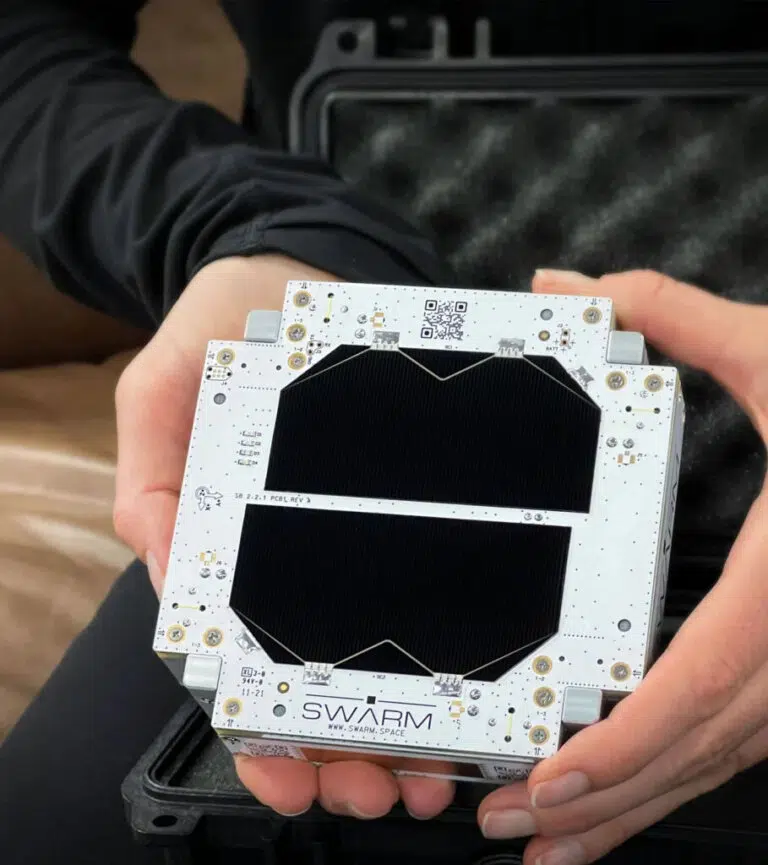
The Internet of Things is set to boom
The Internet of Things has been quietly transforming industries for years.
But now two relatively recent telecoms trends are set to turbo-charge the usefulness of IoT. Over the next year or so, IoT is about to go from being merely useful for enterprises to being central for almost everything.
Let’s take a look at what has changed.
Private 5G is currently the fastest growing segment of telecoms deployments. Ideal for large commercial sites, Private 5G networks are eclipsing Wi-Fi in factories, manufacturing sites, mining sites and more. The separated architecture of 5G enables a private organisation to deploy their own 5G network on-premises, delivering high bandwidth and lower latency than Wi-Fi, and supporting up to a million devices per square kilometre.

Figure 1. BMW production facilities in Regensburg, Bavaria enabled with Private 5G.
So is Private 5G really a big thing?
You bet. And it is really all about making IoT better.
Private 5G networks represent a paradigm shift in how IoT devices are connected. Unlike public networks, private 5G offers organisations dedicated bandwidth, increased security, and greater control over their network traffic. In particular, Private 5G in manufacturing plants is now widespread. In Germany alone, BMW, Bosch, Volkswagen, BASF and Lufthansa all use Private 5G to enable faster, more reliable communication between IoT devices and control systems. This change has led to major improvements in production efficiency and safety. In the United States, many public safety facilities and prisons use Private 5G for more secure IoT. And worldwide, the deployment of Private 5G has been strong in mining sites, warehouses and supermarket distribution centres in particular, because Private 5G means they can deploy much more IoT for more things, without compromising reliability.
In fact, you can even buy online your very own Private 5G network from Amazon, delivered to your door.
The second telecoms trend set to turbo-charge IoT is direct-to-cell satellite services.
Direct-to-cell is in the media a lot right now. Last year Apple introduced a limited direct-to-cell capability built in to its smartphones as an emergency service. Next month SpaceX will launch its own direct-to-cell service compatible with LTE, meaning that any 5G LTE-capable phone will be able to use it without any upgrade or special software.
Of course there are limitations. Phones are small limited-power devices with internal antennas. They are nothing like the panels and dishes used in a normal Starlink service which is high-bandwidth and low-latency. Direct-to-cell services will be throttled, limited to voice calls, texts and chats, and likely with restricted bandwidth and volumes too.

Figure 2. A SpaceX/Swarm direct-to-cell satellite is only the size of a sandwich.
However, direct-to-cell is not really about phones at all. It is all about IoT, and for IoT it is transformative.
IoT typically only requires low data rates, periodic uploads, and no constant signal – all perfect for direct-to-cell. Direct-to-cell allows IoT devices to connect directly to a cellular network even where no traditional cellular coverage exists, bypassing the need for a separate gateway. This development has made it easier to deploy IoT devices in remote areas, opening new possibilities in fields like agriculture and environmental monitoring. Expect to see many more cheap, sometimes solar-powered, IoT devices in the very near future.
One recent use case of this is the deployment by regulators of an IoT network to connect simple acoustic sensors deployed in the Brazilian rainforest. “Basically, they have just an acoustic sensor, like you have on your phone, and it basically just hears a chainsaw, and then calls in the people that will stop the [illegal deforestation],” says Sarah Spangelo, director of Satellite Engineering at SpaceX.
This is all exciting stuff, but going all-in on IoT introduces some practical challenges for enterprises. Two key areas of concern are expense management, and the physical management of IoT devices.
As IoT networks grow, so does the complexity of managing expenses and operations. Effective expense management analytics are crucial for understanding and controlling the costs associated with running an extensive IoT network. Proactive expense management involves anticipating potential issues before they impact performance. For example, predictive maintenance can prevent device failures, and dynamic resource allocation can optimise network performance.
Private 5G does not remove the need for fast and reliable wide-area connectivity into premises. In fact, it becomes more important not less, especially for remote monitoring of facilities or full lights-out facilities. All of those high-capacity fibre links and other fixed connections are not free, so analysing and optimising usage and shaping traffic and plans is critical to containing cost.
Then there are the IoT device logistics. It might be boring, but it is also mission-critical. As the number of devices grows, so does the complexity of deploying, maintaining, and securing them. This issue is compounded by the diversity of IoT devices and the need for them to work harmoniously. This is especially true when it comes to remote sensors (with direct-to-cell, for example). Enterprises must find robust ways for tracking and managing these devices, which often involves significant logistical coordination.
Realising these benefits and managing the associated complexities requires a level of expertise that many organisations may not possess internally.
This is where telecom professional services providers such as Telestar play a crucial role. By outsourcing the operational management of IoT networks to experts, enterprises can ensure efficiency and contain costs. Telestar offers the specialised knowledge and resources needed to manage the complexities of modern IoT networks effectively, from analytics and proactive management of spend to the physical logistics of device management.
IoT is set to boom. The rewards are there in increased accuracy and efficiency, so long as managing it all doesn’t become an expensive distraction.
If you’re ready to go all-in on IoT, contact Telestar to see how easily it can all be managed.